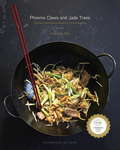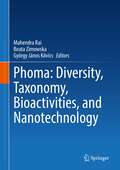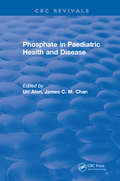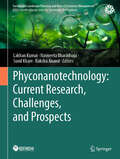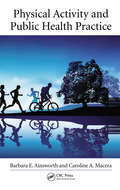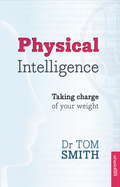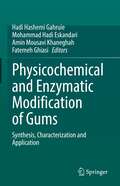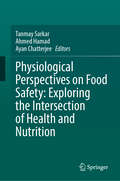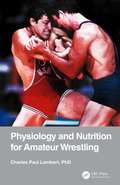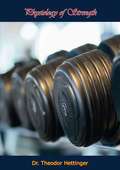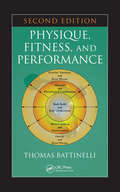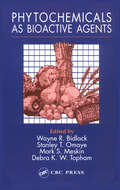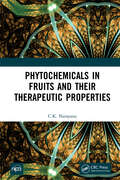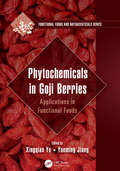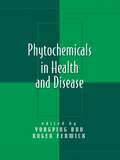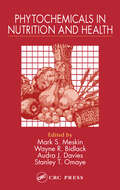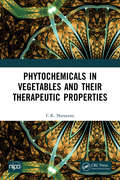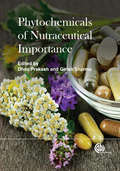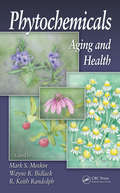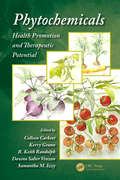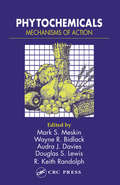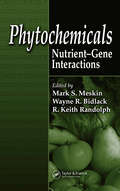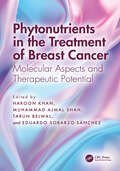- Table View
- List View
Phoenix Claws and Jade Trees
by Jody Horton Kian Lam KhoCreate nuanced, complex, authentic Chinese flavors at home by learning the cuisine's fundamental techniques. Phoenix Claws and Jade Trees offers a unique introduction to Chinese home cooking, demystifying it by focusing on its basic cooking methods. In outlining the differences among various techniques--such as pan-frying, oil steeping, and yin-yang frying--and instructing which one is best for particular ingredients and end results, culinary expert Kian Lam Kho provides a practical, intuitive window into this unique cuisine. Once one learns how to dry stir-fry chicken, one can then confidently apply the technique to tofu, shrimp, and any number of ingredients. Accompanied by more than 200 photographs, including helpful step-by-step images, the 158 recipes range from simple, such as Spicy Lotus Root Salad or Red Cooked Pork, to slightly more involved, including authentic General Tso's Chicken or Pork Shank Soup with Winter Bamboo. But the true brilliance behind this innovative book lies in the way it teaches the soul of Chinese cooking, enabling home cooks to master this diverse, alluring cuisine and then to re-create any tempting dish they encounter or can imagine.
Phoma: Diversity, Taxonomy, Bioactivities, and Nanotechnology
by Mahendra Rai Beata Zimowska György János KövicsThe book covers the taxonomy, diversity, bioactivity, and nanotechnology involved in the study of the genus Phoma. It presents the most recent molecular taxonomic approach, secondary metabolites, different bioactivities, combating microbial threats, and its use in nanotechnology from a basic research to an applied perspective. Expert contributors provide the latest research and applications to present thorough coverage of this important genus in human and plant pathology and the disease management.
Phosphate in Paediatric Health and Disease
by U. AlonPhosphate in Pediatric Health and Disease provides a state-of-the-art overview of normal physiology, pathophysiology, genetics, clinical and therapeutic aspects of different types of phosphate homeostasis in early life. The book reviews the developmental physiology of phosphate metabolism from the fetus to the adolescent. It describes the pathophysiologic mechanisms associated with perturbations in phosphate homeostasis as well as discusses the different clinical conditions related to abnormal mineral metabolism, parathyroid hormone and vitamin D in infancy, childhood, and adolescence, and the modern diagnostic and therapeutic modalities. This book will benefit pediatricians, endocrinologists, neurologists, nutritionists, and researchers in the field of mineral metabolism.
Phyconanotechnology: Current Research, Challenges, and Prospects (Sustainable Landscape Planning and Natural Resources Management)
by Navneeta Bharadvaja Lakhan Kumar Raksha Anand Sunil KhareThis book explores the scientific development in the field of algal-based nanomaterials synthesis, production methods, and commercial and utilization aspects of phyconanomaterials to address a range of problems of humanity. Nanomaterials have been recently explored for and employed in environmental remediation, biomedical applications, agriculture, food industries, energy sectors, cosmetics, biolabeling, and space due to their versatility and wide range of applicability owing to their peculiar material characteristics and other attributes. Their conventional synthesis approaches are replacing green methods as the latter is comparatively economical, energy-efficient, and eco-friendly. Biological entities and derived materials-based nanomaterials synthesis is such a green approach. Using natural systems to synthesize nanomaterials does not leave behind any toxic compounds generally produced as by-products when physical or chemical methods are employed. Phyconanotechnology, a green way of synthesizing nanomaterials, can be used to overcome this issue. In the proposed book, algal diversity-based nanomaterials synthesis and their applications will be presented to the readers.
Physical Activity and Public Health Practice
by Barbara E. Ainsworth Caroline A. MaceraPhysical activity remains a critical area of research as we consider cost-effective measures for lowering the chronic disease epidemic worldwide. In our increasingly automated society, many adults and children are not active at health-enhancing levels. In Physical Activity and Public Health Practice, a panel of respected researchers summarizes esse
Physical Intelligence: How To Take Charge Of Your Weight
by Tom Smith Dr Tom SmithThis book analyses the often-complex factors that influence weight gain, from our hormonal make-up to our eating psychology. Full of evidence-based research and real-life case histories, it gives intelligent advice on what to do when confronted with the need to tackle your health, or that of your child. It emphasises that exercise is key and that eating is one of the joys of life, not a medication. Topics include: Our hunter-gathering past; Exercise intelligence; Why we don't exercise enough; Hydration intelligence; Nutritional intelligence; Fasting intelligence; Antioxidants, vitamins, minerals and other supplements.
Physical Intelligence: How To Take Charge Of Your Weight
by Tom Smith Dr Tom SmithThis book analyses the often-complex factors that influence weight gain, from our hormonal make-up to our eating psychology. Full of evidence-based research and real-life case histories, it gives intelligent advice on what to do when confronted with the need to tackle your health, or that of your child. It emphasises that exercise is key and that eating is one of the joys of life, not a medication. Topics include: Our hunter-gathering past; Exercise intelligence; Why we don't exercise enough; Hydration intelligence; Nutritional intelligence; Fasting intelligence; Antioxidants, vitamins, minerals and other supplements.
Physicochemical and Enzymatic Modification of Gums: Synthesis, Characterization and Application
by Amin Mousavi Khaneghah Hadi Hashemi Gahruie Mohammad Hadi Eskandari Fatemeh GhiasiNatural gums are polysaccharides consisting of multiple sugar units linked together via glycosidic linkages. Most natural gums reveal appropriate safety for oral consumption in the form of food additives or drug carriers. Challenges related to the utilization of natural polysaccharides, however, include uncontrolled rates of hydration, pH dependent solubility, viscosity reduction during storage, and weak interfacial properties. Modification provides an efficient route for not only removing such drawbacks but also improving physicochemical properties, such as solubility, viscosity and swelling index, and introducing new properties for varied applications.This book provides a comprehensive review of the various modifications on gums to make them suitable for food, cosmetic and pharmaceutical industries. The book is divided in four parts: an introduction to natural gums followed by in-depth coverage of chemical modification, physical modification, and enzymatic modification of gums. Each chapter includes reaction mechanisms, physicochemical properties, rheological properties, interfacial properties, applications and future perspectives. Presenting a succinct account on gum modification from a practical point of view, this book is a helpful reference for academic and industrial scientists and engineers in food technology, materials chemistry, pharmaceuticals, chemical, industrial, and applied engineering, biochemistry, and biopolymers.
Physiological Perspectives on Food Safety: Exploring the Intersection of Health and Nutrition
by Ayan Chatterjee Tanmay Sarkar Ahmed HamadAs food safety concerns become increasingly prevalent, understanding the physiological implications of foodborne pathogens, contaminants, and additives is essential for safeguarding public health. Physiological Perspectives on Food Safety: Exploring the Intersection of Health and Nutrition is a groundbreaking exploration that illuminates the dynamic relationship between food safety and human physiology. This work delves deep into the physiological mechanisms underlying the safety of the foods we consume, offering invaluable insights into how our bodies interact with and respond to the foods we eat. Bridging the gap between the fields of food science and human physiology, Physiological Perspectives on Food Safety: Exploring the Intersection of Health and Nutrition synthesizes cutting-edge research to provide a holistic understanding of the complex interactions between food safety and human health. By exploring topics such as digestive physiology, immune function, metabolic health, and neurological effects, this work sheds light on how food safety practices can impact physiological processes at every stage of life. Through its rigorous analysis, practical insights, and forward-thinking approach, Physiological Perspectives on Food Safety promises to be an indispensable resource for anyone seeking to deepen their understanding of the physiological underpinnings of food safety and its implications for human health and nutrition. It will serve as a vital resource for researchers, healthcare professionals, policymakers, and beyond.
Physiology and Nutrition for Amateur Wrestling
by Charles Paul LambertPhysiology and Nutrition for Amateur Wrestling is essential reading for amateur wrestlers and their coaches with a desire to learn about physiological training and nutrition for their sport. Written by Charles Paul Lambert, PhD, a competitive wrestler and academic expert in high-intensity exercise, this book describes the primary physiological systems involved in amateur wrestling. Readers will learn how to substantially optimize performance and discover ways to improve body composition specific to the sport of amateur wrestling. The book addresses important issues, including relative energy deficiency in sport, debates around weight loss, the specificities of training and nutrition for female wrestlers, as well as strategies on keeping fit in the years after a competitive career. Features: Discusses strategies for monitoring overall training load to prevent overtraining and optimize training Includes optimal nutritional fueling plans for wrestlers written by a Certified Coach with USA Wrestling and compares different dietary approaches to losing weight and fat Provides optimal rehydration and refueling plans based on situational needs in the post-weigh-in period Both scientific and practical, Physiology and Nutrition for Amateur Wrestling will appeal to wrestlers, high-school and college coaches, and those working in applied physiology research and exercise science.
Physiology of Strength
by Dr Theodor Hettinger M. H. Thurlwell Prof. Arthur H. SteinhausFirst published in 1961, “[T]his book is the result of ten years of research and experiment in the problems of muscle strength and muscle training at the Max-Planck-Institut für Arbeitsphysiologie, Dortmund, Germany supplemented by further work at the Lankenau Hospital, Division of Research, Philadelphia, Pennsylvania. There is provided the present status of these problems, and there is demonstrated how muscle strength may be built and maintained with a minimum of time and effort.“The methods used are adaptable, with suitable modification, to children, to average young people, to athletes in training, to sedentary workers and older persons who wish to maintain bodily strength, and to those who have undergone surgery and need rehabilitation of the muscle structure—in short, to anyone who wishes to develop and maintain good muscle tone.“A strong and well-built body not only has pleasing appearance, it permits the undertaking of arduous physical activities or active sports without undue fatigue, and with real enjoyment.“It is the author’s hope that in this age of fast living and nervous tension, when there often seems neither time nor place for extensive exercise, this book will assist those who wish to maintain bodily strength and fitness—simply, at home, without elaborate equipment—on a do-it-yourself basis. It should prove of special benefit to teachers of physical education and rehabilitation.”—THEODOR HETTINGER, M.D.
Physique, Fitness, and Performance (Exercise Physiology)
by Thomas BattinelliTotally revised and updated, this second edition of the well-received Physique, Fitness, and Performance retains the unique integrated approach of its predecessor, examining the relationship of structure to function in human performance. Far surpassing the limited focus of standard exercise and fitness books, it combines the morphological study of
Phytochemicals as Bioactive Agents
by Mark S. Meskin Wayne R. Bidlack Stanley T. Omaye Debra K. W. TophamPhytochemicals as Bioactive Agents focuses on the mechanisms of action of phytochemicals identified as displaying bioactivity in the prevention of cancer, heart disease and other diseases and the prospects for developing functional foods containing these bioactive compounds. Internationally recognized experts present the latest research findings on the antimutagenic and anticarcinogenic effects of tea and tea constituents; chemoprevention provided by plants in the family Cruciferae and genus Allium; anticarcinogenic effects of carotenoids and curcumins; the chemistry and application of alfalfa saponins; the bioactive components of rice bran and rice oil; the effects of garlic on lowering serum cholesterol; and using phytochemicals to optimize gastrointestinal tract health and function.
Phytochemicals in Fruits and their Therapeutic Properties
by C.K. NarayanaThe book provides facts of fruits and their role in curing of diseases with cell line or animal studies and their pharmacological evidence would help the readers to understand the subject in greater depth. It provides information on the subject and will help researchers to carry the interest forward. The book links the traditional knowledge available on each fruit crop regarding their curative properties and the information on their scientific validation. The contents have been organized crop wise in a logical sequence, with references been provided at the end of each chapter for further reading and better understanding of the subject.The book will help the students/ researchers/ scientists and common man alike to look at the fruits as protective foods not just because it is said so, but with a scientific explanation.Note: T&F does not sell or distribute the hardback in India, Pakistan, Nepal, Bhutan, Bangladesh and Sri Lanka. This title is co-published with NIPA.
Phytochemicals in Goji Berries: Applications in Functional Foods (Functional Foods and Nutraceuticals)
by Xingqian Ye and Yueming JiangGoji berries (Lycium barbarum), which are widely distributed in Northwestern China, Southeastern Europe and the Mediterranean areas, have traditionally been employed in Chinese medicine from ancient times. Goji berries, also known as wolfberry, have become increasingly popular in the Western world because of their nutritional properties, often advertised as a superfood in Europe and North America. With the development of analysis methods, various chemical constituents have been identified, including carbohydrates, carotenoids, flavonoids, betaine, cerebroside, -sitosterol, amino acids, trace elements, vitamins and other constituents. Polysaccharides have been identified as one of the major active ingredients responsible for biological activities. Phytochemicals in Goji Berries: Applications in Functional Foods, a volume in the Functional Foods and Nutraceuticals Series, provides information about the chemical, biochemical, botanic properties, bioactive components and health benefits of Goji berries. It also discusses postharvest storage technology, processing technology, and the development and utilization of Goji berry by-products in medicinal foods and functional foods, as well as addressing food safety issues. Features: Provide information on Goji fruit origin and growing conditions, distribution, and biochemical properties Discusses such medicinal properties and health benefits of Goji berries as the capacity to lower blood pressure, treat anemia, maintain cholesterol levels in the normal range and decrease risk of cardiovascular disease. Additionally, Goji berries have anti-inflammatory and anti-tumor properties, among others Includes information on traditional products, new products and innovative processing technologies This book will serve college and university students majoring in food science, nutrition, pharmaceutical science, and botanical science. It also will serve as a unique reference for food science professionals pursuing functional foods, marketing expansion, as well as nutritional dietary management. Readers will obtain sound scientific knowledge of the nutritional value and health benefits of the different Goji berry products such as juice, cake, soup, snacks, and medicinal foods. Also available in the Functional Foods and Nutraceuticals series: Korean Functional Foods: Composition, Processing and Health Benefits, edited by Kun-Young Park, Dae Young Kwon, Ki Won Lee, Sunmin Park (ISBN 978-1-4987-9965-2) Phytochemicals in Citrus: Applications in Functional Foods, edited by Xingqian Ye (ISBN 978-1-4987-4272-6) Food as Medicine: Functional Food Plants of Africa, by Maurice M. Iwu (ISBN 978-1-4987-0609-4) For a complete list of books in the series, please visit our website at https://www.crcpress.com/Functional-Foods-and-Nutraceuticals/book-series/CRCFUNFOONUT
Phytochemicals in Health and Disease (Oxidative Stress And Disease Ser. #Vol. 12)
by Yongping Bao Roger Fenwick"� well-written and the content is clearly presented. � There are plentiful figures and tables, which are effectively labeled and adequately support the content. �highly recommended for academic and special libraries. �effectively presents current research on phytochemicals in a readable manner."- E-Streams "This landmark volume shows h
Phytochemicals in Nutrition and Health
by Mark S. Meskin Wayne R. Bidlack Stanley T. Omaye Audra J. DaviesAre soy isoflavones neuroprotective? Just how different is one species of Echinacea from another? Which phytochemicals will be effective as therapeutic agents in vivo? Supported by solid scientific research, Phytochemicals in Nutrition and Health helps provide answers to these and other probing questions concerning the mechanisms of action associat
Phytochemicals in Vegetables and their Therapeutic Properties
by C.K. NarayanaThis book contains information on plant-based nutrients and phytochemicals in vegetable crops that are commonly consumed. The information generated by researchers using modern methods of biochemical analysis and results, mostly validated using cell line cultures or animal models, and to a limited extent on human volunteers have been presented. The vegetable crops have been grouped based on the family they belong to, because most often members of the same family have similar biomolecules as active ingredients and have similar effects on health. The book will help students/researchers/scientists and common man alike to look at the vegetables as protective foods, not just because it is said so, but with a scientific explanation.Note: T&F does not sell or distribute the hardback in India, Pakistan, Nepal, Bhutan, Bangladesh and Sri Lanka. This title is co-published with NIPA.
Phytochemicals of Nutraceutical Importance
by Girish Sharma Dhan PrakashNutraceuticals are bioactive phytochemicals that protect or promote health and occur at the intersection of food and pharmaceutical industries. This book will cover a wider spectrum of human health and diseases including the role of phytonutrients in the prevention and treatment. The Book includes chapters dealing with biological and clinical effect, molecular level approach, quality assurance, bioavailability and metabolism of a number phytochemicals and their role to combat different diseases.
Phytochemicals of Nutraceutical Importance
by Girish Sharma Dhan PrakashNutraceuticals are bioactive phytochemicals that protect or promote health and occur at the intersection of food and pharmaceutical industries. This book covers a wide spectrum of human health and diseases, including the role of phytonutrients in the prevention and treatment. It also reviews biological and clinical effect, molecular level approach, quality assurance, bioavailability and metabolism of a number phytochemicals, and their role to combat different diseases.
Phytochemicals: Aging and Health
by R. Keith Randolph Mark S. Meskin Wayne R. BidlackThe fastest growing demographic in both developed and developing societies around the world, the elderly bring unique medical and financial health-care burdens. In response to this phenomenon, a large and growing body of research is directed toward the science of healthy aging. A substantial amount of observational data points to the consumption o
Phytochemicals: Health Promotion and Therapeutic Potential
by Colleen Carkeet Kerry Grann R. Keith Randolph Dawna Salter Venzon Samantha M. IzzyIncreasing knowledge of the various protective effects of phytochemicals has sparked interest in further understanding their role in human health. Phytochemicals: Health Promotion and Therapeutic Potential is the seventh in a series representing the emerging science with respect to plant-based chemicals. Drawn from the proceedings at the Seventh In
Phytochemicals: Mechanisms of Action
by R. Keith Randolph Mark S. Meskin Wayne R. Bidlack Audra J. Davies Douglas S. LewisPhytochemicals: Mechanisms of Action is the latest volume in a highly regarded series that addresses the roles of phytochemicals in disease prevention and health promotion. The text, an ideal tool for scientists and researchers in the fields of functional foods and nutraceuticals, links diets rich in plant-derived compounds, such as fruit, vegetabl
Phytochemicals: Nutrient-Gene Interactions
by R. Keith Randolph Mark S. Meskin Wayne R. BidlackUnderstanding phytochemical-gene interactions provides the basis for individualized therapies to promote health as well as prevent and treat disease. The authors of Phytochemicals: Nutrient-Gene Interactions examine the interactions between phytochemicals and the human genome and discuss the impact these interactions have on health, aging, a
Phytonutrients in the Treatment of Breast Cancer: Molecular Aspects and Therapeutic Potential
by Tarun Belwal Haroon Khan Muhammad Ajmal Shah Eduardo Sobarzo-SánchezPhytonutrients in the Treatment of Breast Cancer delves into the evolving role of phytonutrients as powerful therapeutic agents in the fight against breast cancer. This comprehensive book explores the molecular mechanisms by which bioactive compounds found in fruits, vegetables, and plant-based foods influence cancer progression, offering a promising approach to cancer prevention and treatment. Drawing on the latest research, it highlights how compounds such as flavonoids, carotenoids and polyphenols target key molecular pathways involved in cancer cell growth, metastasis, and resistance to chemotherapy.Incorporating cutting-edge experimental and clinical data, this book provides a detailed examination of how specific phytonutrients can complement traditional cancer therapies. It presents a compelling case for the integration of these natural compounds into holistic treatment strategies, aimed at improving patient outcomes while minimizing side effects. The author addresses the potential of phytonutrients to support immune function, reduce inflammation, and enhance the efficacy of conventional treatments, positioning these dietary compounds as critical adjuncts in personalized cancer care.Features: Covers the latest research on how phytonutrients contribute to breast cancer prevention and treatment Explains in-depth the molecular pathways through which phytonutrients exert their anti-cancer effects Provides practical applications for incorporating phytonutrient-rich foods into breast cancer treatment plans Discusses how consuming phytonutrients may reduce the risk of developing breast cancer Includes a comprehensive list of resources and references for further exploration into phytonutrient research The book also emphasizes the growing importance of diet and nutrition in cancer prevention, offering practical insights for healthcare professionals, researchers, and patients alike. With a focus on the therapeutic potential of plant-based foods, Phytonutrients in the Treatment of Breast Cancer serves as an invaluable resource for those seeking to understand the molecular intricacies of cancer and explore innovative, integrative treatment options. Whether for clinical application or research exploration, this book provides a solid foundation for advancing the role of phytonutrients in breast cancer therapy.
